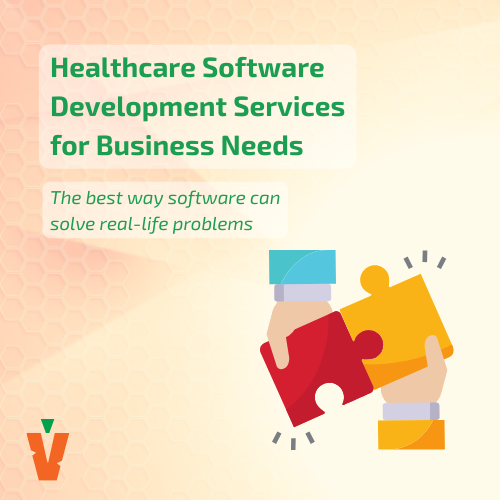We’re passionate about reducing providers’ workloads and letting them focus on what matters most — improving patient outcomes. Your company can do the same with the right CSS mindset and the three strategies we’re about to share.
Medicine advances with every new bit of tech it adopts. Client Success Managers of healthcare SaaS companies are leading this gradual shift, making organizations better connected, easier to run, and more patient-centric. Looking at the numbers, their work also raises revenue by 30%. Let's explore ways to maximize their value and effectiveness for your company and the wider healthcare community.
The Healthcare Tech Landscape
US-based healthcare tech exploded in popularity and profitability in 2021. There’s no going back to pen and paper, but we’re yet to enter a full-blown tech revolution. To date, most tech adoption deals with transactional or operational healthcare tasks like appointment scheduling, billing, and prescriptions. But the potential is massive, though — Client Success Managers should take the lead role in communicating that.
Software can support primary care providers, insurers, government agencies like the CMS, pharmacies—you name it. According to 2024 healthcare tech forecasts, experts expect the following technology adoption in healthcare:
- AI-driven healthcare SaaS will transform traditional service models with diagnostics support, predictive medicine, and virtual assistance. We expect more change-resistant institutions to adopt it, although clinical practice use will take 5–10 years to become the norm.
- Healthcare payment and insurance systems will prioritize efficiency and transparency. We’re talking about self-service patient portals, automated insurance claims processing, and better compliance tools.
- The biopharmaceutical industry will rely on technology to produce better medication faster. Software accelerates innovation, reduces costs, and enhances the efficiency of bringing novel therapies to market.
Healthcare communities are ripe for a technological revamp; all parties can benefit from it. But it’s not always smooth sailing.
Key Software Adoption Challenges in Healthcare
Healthcare tech faces a mixed response from experts in the field. Managers and care workers cite greater efficiency and reduced workloads after adopting software. However, some say that technology often causes duplicated or unnecessary work.
In many cases, medical workers feel like healthcare tech makes their work harder, not quicker and simpler. For instance:
- Complex software systems. When healthcare technology has numerous features, its interface might be cluttered and confusing. As hospital staff and operators already have massive workloads, complexity is a no-no.
Pro tip: Need help designing user-friendlier platforms? Learn how we helped IFPRI by using the core principles of consumer-oriented design on the front and back end.
- Lack of usage training. Many software vendors produce a system, deploy it, and leave it to the organization to train its users. Frustration, errors, and delays ensue, especially if you’re less-than-thorough with documentation. That’s why Vitamin collaborates with in-house developers and project managers to get everybody on the same page from day one.
- Poor workflow integrations. New healthcare SaaS must integrate with old workflows. There should be no double entries or additional tools to install or integrate after adoption. Otherwise, medical workers will—rightfully—perceive it as an extra task.
- Increased documentation requirements. Data entry and record-keeping are slow as users get accustomed to new software. The workload increases before it decreases, creating resistance in overworked healthcare professionals.
3 Strategies for Driving Software Adoption
The key to encouraging technology adoption in healthcare is communicating how software will improve the client’s operations. You have the upper hand here, as you’re working with companies already aware of your expertise. Here are three specific strategies Client Success Managers may use to ensure an upsell.
1. Use Client Relationship Management Tools
Let’s face it — modern clients want personalized, relevant interactions at each stage of the customer journey. For this reason, marketing and sales teams shouldn’t be the only ones using CRM software. It’s invaluable for Client Success Managers, especially when there’s a loop between all customer-facing departments.
Platforms like HubSpot are already prominent in healthcare, doing heaps for your client success efforts. Here’s what they can do for you:
- Segmentation. A government-backed provider won’t need the same features as a modern hospital. With CRM, you categorize clients based on their specialty, size, and location. Then, you tailor your offers to suit each segment.
- Advocacy. CRMs point to the most satisfied clients, which you might encourage to advocate your healthcare SaaS product. B2B buyers trust their peers — they could upsell or cross-sell on your behalf. Picking the right referral partner makes or breaks this strategy, so use the data at your disposal.
- Monitoring. Growing client engagement with software is a big chunk of your work, but only if you nurture your contacts. CRMs offer customer health scores, letting you keep a hand on the pulse of client relationships and address low satisfaction before it causes trouble.
- Identifying opportunities. CRM software displays clients’ transaction histories, behaviors, and preferences. It also shows which parts of your website they’ve recently visited, which is an excellent indicator of their potential purchase intent. You can look at this data — which service pages and email offers they expressed interest in — and use it to tailor your upselling and cross-selling suggestions.
- Unifying knowledge. CRM dashboards contain accurate information for the marketing, sales, and customer satisfaction departments. All three teams can access the same data and use it as a single source of truth, ensuring their messaging is on the same page and consistent with the company's voice, goals, and values.
Beyond improving your relationship management efforts and helping you predict and solve issues clients may face, the data you analyze with CRM also empowers the following strategies.
2. Have a Clear Value Proposition
Organizations rarely want to modernize for modernization’s sake. You’re more likely to get accepted if you demonstrate how software will improve operations.
The best value propositions arise from a thorough understanding of clients’ needs. Luckily, that’s your forte as the Client Success Manager. Start by identifying pain points and devising solutions that address them as effectively as possible. You may aim to automate repetitive tasks, make it easier to schedule appointments, or improve the allocation of beds and meds. The goal should always be client-specific.
Pro tip: If healthcare tech helps with regulatory compliance, make that a central part of the proposition. HIPAA compliance is non-negotiable for healthcare providers, so anything that secures critical patient data will help you get more people on board.
3. Simplify Onboarding
Technology adoption in healthcare is still relatively new. Traditional education and employee training programs rarely involve the skills necessary to use specialized software tools, and busy healthcare workers often lack the time for after-work upskilling. It’s no wonder they may struggle to adopt it.
It’s your company’s job to bridge the gap between engineers and employees using demos and documentation. But these files might still contain too much tech speak for your usual healthcare worker. That’s why Client Success Managers may team up with marketing to create accessible educational materials for the clients, pairing upselling with upskilling.
Basically, think about ways to make the latest SaaS as simple as possible for the healthcare community. Your company is the technology wizz in this scenario, and nobody knows your software better than you do. Why not use the in-house expertise to ensure seamless tech adoption?
How Vitamin Supports Seamless Software Adoption
Healthcare organizations work slower (or not at all) while adopting technology. That’s another reason why providers may refuse upgrades. But integrating software doesn’t have to make them pause operations — Vitamin proved that in practice.
We worked with a tech-enabled client who handles a lot of private information. They contacted us upon realizing their system contained old, vulnerable components. They requested a thorough update that wouldn’t disrupt their daily workflow, and Vitamin delivered.
We first stabilized their system with cloud infrastructure. Then, we devised a work plan to reverse-engineer their code. We made thousands of modifications to cover all client-facing features and performed the system migration stage-by-stage to minimize disruptions. After releasing the new solution, we monitored its performance for a month to catch and fix bugs.
Client Success Managers can learn from our approach to ensure healthcare communities remain stable while adopting technology. If you’re looking for more information, read the complete case study.
Software Adoption & Client Success: A Delicate Balance
Remember that positive experiences increase technology adoption rates. Your company should provide a seamless, straightforward experience to improve the odds of growth.
Your suggestions should be realistic, simple, and value-driven. Don’t go overboard with cutting-edge solutions, complex mechanisms, and full-blown system revamps. Show care, emphasize efficiency, and deliver on your promises for the best results.
Are you looking to bounce ideas off a technical partner with in-depth healthcare knowledge? Schedule a consultation and talk us through your suggestion.



.png)

